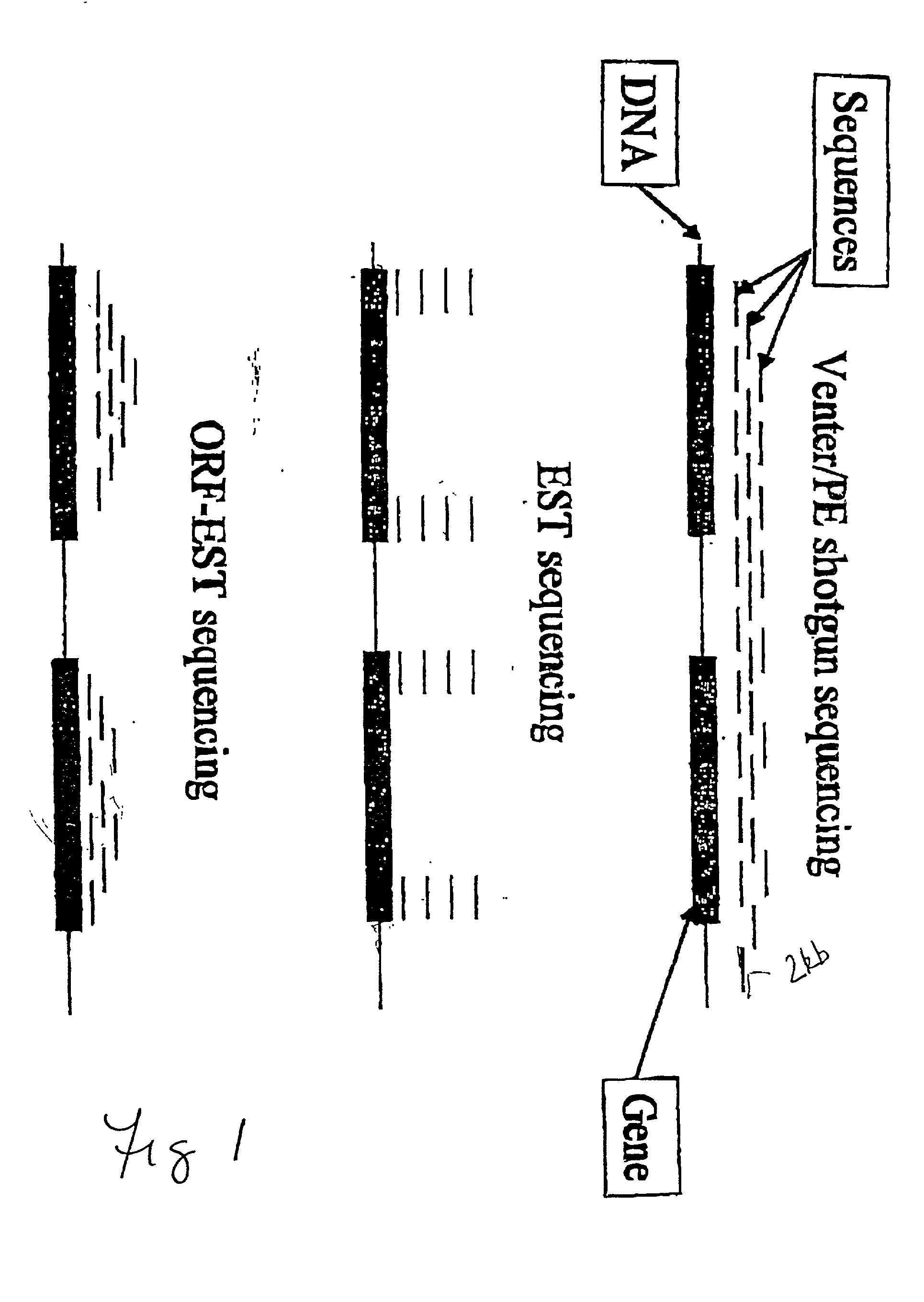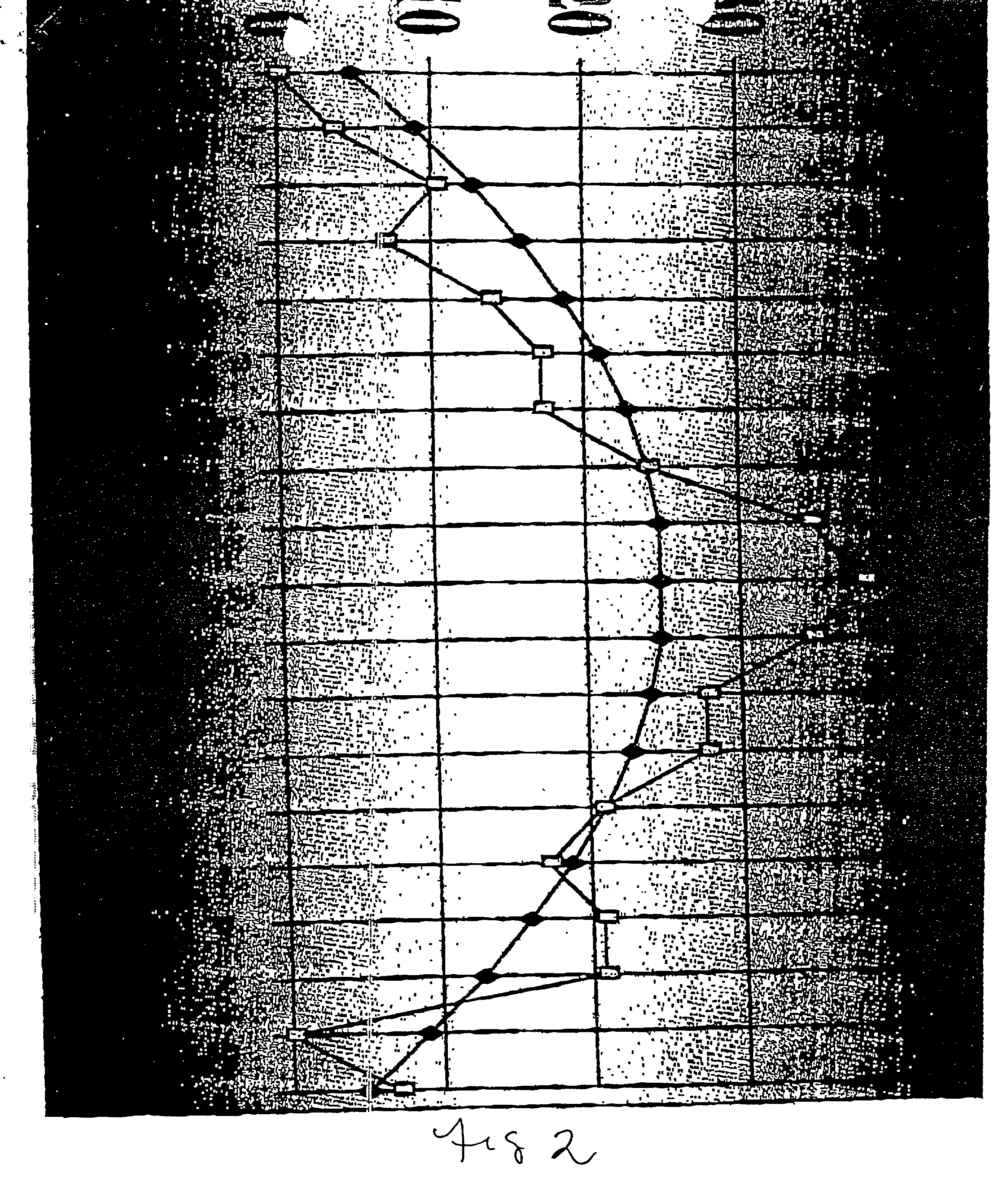Method for determining nucleotide sequences using arbitrary primers and low stringency
a nucleotide sequence and primer technology, applied in the field of nucleic acid research, can solve the problems of time-consuming and costly, inability to accurately determine the nucleotide sequence of inability to accurately identify the larger fragment from which the eukaryotic genome is derived
- Summary
- Abstract
- Description
- Claims
- Application Information
AI Technical Summary
Problems solved by technology
Method used
Image
Examples
example 2
[0039] The single stranded cDNA produced in example 1, supra, was used as the template in a PCR amplification reaction. In this, a sample of lul of single stranded cDNA was combined, together with the same primer that had been used to generate the cDNA. Amplification was carried out, using 12uM of primer, 200 uM of each dNTP, 1.5mM MgCl.sub.2, 1 unit of DNA polymerase, and buffer (5OmM KC1, 10 mM Tris-HCl, pH9.0, and 0.1% Triton X-100), to reach a final volume of 15ul. Then, 35 cycles of amplification were carried out, 1 cycle consisting of 95.degree. C. for 1 minute, (denaturation), 37.degree. C. for 1 minute (annealing), and extension at 72.degree. C., for 1 minute. In the final cycle extension was increased for 5 minutes. The amplification products were used in the analyses which follow. Additional experiments were also carried out, in the same fashion, using different primers.
example 3
[0040] In order to analyze the amplification products, 3ul samples were mixed with 3ul of sample buffer, 0.05% bromophenol blue, 0.05% xylene cyanol FF, and 7% sucrose (w / v), in distilled water, and then visualized on silver stained, 6% polyacrylamide gels, following Sanguinetti, et al, Biotechniques 17:3-6 (1994), incorporated by reference.
[0041] The steps set forth supra result in banding patterns on the gel, each band representing a different sequence. The most complex banding patterns were analyzed, as discussed in example 4, infra. It is important to note that controls were run during the experiments, to make sure that genomic DNA had not contaminated the samples. In brief, the control experiments used mRNA and genomic DNA, without reverse transcription PCR. The profiles obtained should differ, in each case from those obtained using reverse transcribed mRNA, and did so.
example 4
[0042] The cDNAs generated in the preceding examples were mixed, by pooling 10-20ul of each set of products into a final volume of 60ul, followed by electrophoresis through a 1% low melting point agarose gel containing ethidium bromide to stain the cDNA fragments. Known DNA size standards were also provided.
[0043] The gel portions containing fragments between 0.25 and 1.5 kilobases were excised, using a sterile razor blade. Excised agarose was then heated to 65.degree. C. for 10 minutes, in 1 / 10 volume of NaOAc (3mM, pH 7.0), and cDNA was recovered via standard phenol / chloroform extraction and ethanol precipitation, followed by resuspension in 40ul ofwater. The thus recovered cDNA was used in the following experiments.
PUM
| Property | Measurement | Unit |
|---|---|---|
| volume | aaaaa | aaaaa |
| pH | aaaaa | aaaaa |
| pH | aaaaa | aaaaa |
Abstract
Description
Claims
Application Information
 Login to View More
Login to View More - R&D
- Intellectual Property
- Life Sciences
- Materials
- Tech Scout
- Unparalleled Data Quality
- Higher Quality Content
- 60% Fewer Hallucinations
Browse by: Latest US Patents, China's latest patents, Technical Efficacy Thesaurus, Application Domain, Technology Topic, Popular Technical Reports.
© 2025 PatSnap. All rights reserved.Legal|Privacy policy|Modern Slavery Act Transparency Statement|Sitemap|About US| Contact US: help@patsnap.com



